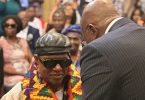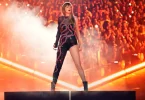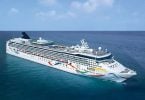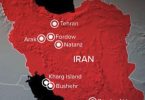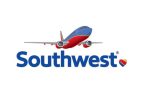(eTN) – American Samoa, a US territory in the Pacific Ocean and a 5 1/2-hour flight from Honolulu, Hawaii, may have an opportunity to beef up its hurting economy. Through the global travel and tourism industry, there is a huge opportunity to increase visitors to this American destination of tropical islands in the warm South Pacific. The tourism industry in the neighboring country of Samoa is booming, while American Samoa has a huge problem. The one airline that flies to American Samoa – Hawaiian Airlines – is making this so challenging, that it is close to impossible. Currently the only air link from this isolated US territory to Hawaii and the US mainland operates only twice a week.
Hawaiian Airlines is the only US carrier flying to this remote region of the United States. Only US flag carriers are allowed to transport passengers between various US airports. While this may be a protection for airlines on the US mainland, applying this to a remote region thousands of miles away from the rest of the country creates a monopoly. For Hawaiian Airlines, this may be a treat, but it’s sheer frustration for travelers and for American Samoa tourism. Calling it selfish, American Samoa officials, including an office staff member for the newly-appointed Republican US Congresswoman, Radewagan Amatavoiced, voiced frustration with the monopoly enjoyed by Hawaiian Airlines, according to comments made to eTN.
Hawaiian Airlines spokesperson Ann Boticelli thinks it is very important point out that any US carrier can provide service between Pago Pago and another US city. She said, “We are currently the only carrier that has elected to do so, and we do that because we feel tied to this community.
“The fact is that it is more expensive to operate in American Samoa. Our costs of flying down there are offset by much lower loads (which is a function of demand). If one of our planes needs major repairs (say, due to a bird strike) it’s much more expensive to repair. More than once in the recent past, we’ve had to send a rescue airplane to Pago Pago with a cost of $100,000.
“We are very interested in seeing the American Samoa government increase tourism demand, and are working with the ASVB [American Samoa Visitors Bureau] on that, because with more demand we can provide more service. Increased service means our costs come down.”
“Hawaiian Airlines has been serving Pago Pago in American Samoa for 30 years. We regularly reviews flight frequencies twice a year to see if adjustments need to be made in order to meet seasonal increases in demand,” Boticelli added. She said the airline will be happy to permanently increase lift to American Samoa, when the hotel capacity and tourism demand warrant it.
This may be a vicious circle. The tourism industry cannot increase infrastructure without air links. Commercial links to the rest of the United States are unaffordable. There may be a very high demand, but with extremely high air fares, and seemingly few people flying due to the high air fares, there seems to be no way out to demonstrate the demand.
Hawaiian Airlines is keeping frequencies low and airfares astronomically high, compared to flights that have a similar range.
Most travel in and out of Pago Pago, American Samoa, is for family travel, and many Samoans have transplanted themselves to live in Hawaii. A family of 4 from American Samoa visiting their relatives in Honolulu, have to come up with $5,000 to cover the airfare. If that same family of 4 were to visit the US mainland instead – where other airline options are available – they could accomplish this for around $1,500.
The same rationale goes for air transportation rate for goods into and out of the territory. Most goods heading to American Samoa come from Hawaii, and with the cost so high to get the goods to its destination, the trickle-down effect is frustrating to say the least. Having to recoup those costs makes for extremely high-priced goods in Samoa once they hit the marketplace. To know the government of Samoa is completely unable to report any good news about tourism or the state of its economy, all one needs to do is take a look at their official websites. American Samoa’s official website hasn’t posted a new media release since May 2013, and the governor’s official website hasn’t posted anything new on any issue since September 2013.
It appears American Samoa Governor Lolo M. Moliga is crying out to put an end to this frustrating situation. He sees great potential in developing travel and tourism to his territory, and he is tired of waiting for the extra air service that can make that happen. He clearly does not agree with Hawaiian Airlines’ philosophy to wait for an increase in demand. In his opinion the demand is already there. What is stopping progress and growth are the high airline fares caused by the monopoly Hawaiian Airlines has enjoyed for decades.
Goveror Moliga is fully supportive of the idea to establish an airline based in the territory to compete with Hawaiian Airlines and make the economy of his region less dependent on one single airline. The result should be more capacity and lower rates, which will result in a better economy and an increase in tourism opportunities. This may be a good idea, or perhaps getting an exemption to the US cabotage act and allowing foreign carriers to transport passengers from Pago Pago to other US ports like Honolulu or Los Angeles may be another solution.
In his recent State of the Territory address, Governor Moliga said:
“The present relationship with Hawaiian Airlines negates our attempts to develop and expand our tourism industry necessary for our economic development diversification program. It is becoming imperative that we must control our own destiny. Thus, steps are being taken to explore the establishment of a second airline that is more sensitive to the development needs of American Samoa.
“The cabotage impediment has been articulated to the Assistant Secretary of Insular Affairs, and it is encouraging that there is genuine concern shown by the Office of Insular Affairs. This issue has been raised continuously, because our air transportation options are confined to one airline that is more concerned with the bottom line instead of becoming a true community partner willing to achieve a ‘win-win’ scenario which will generate mutual benefits for both parties.”






